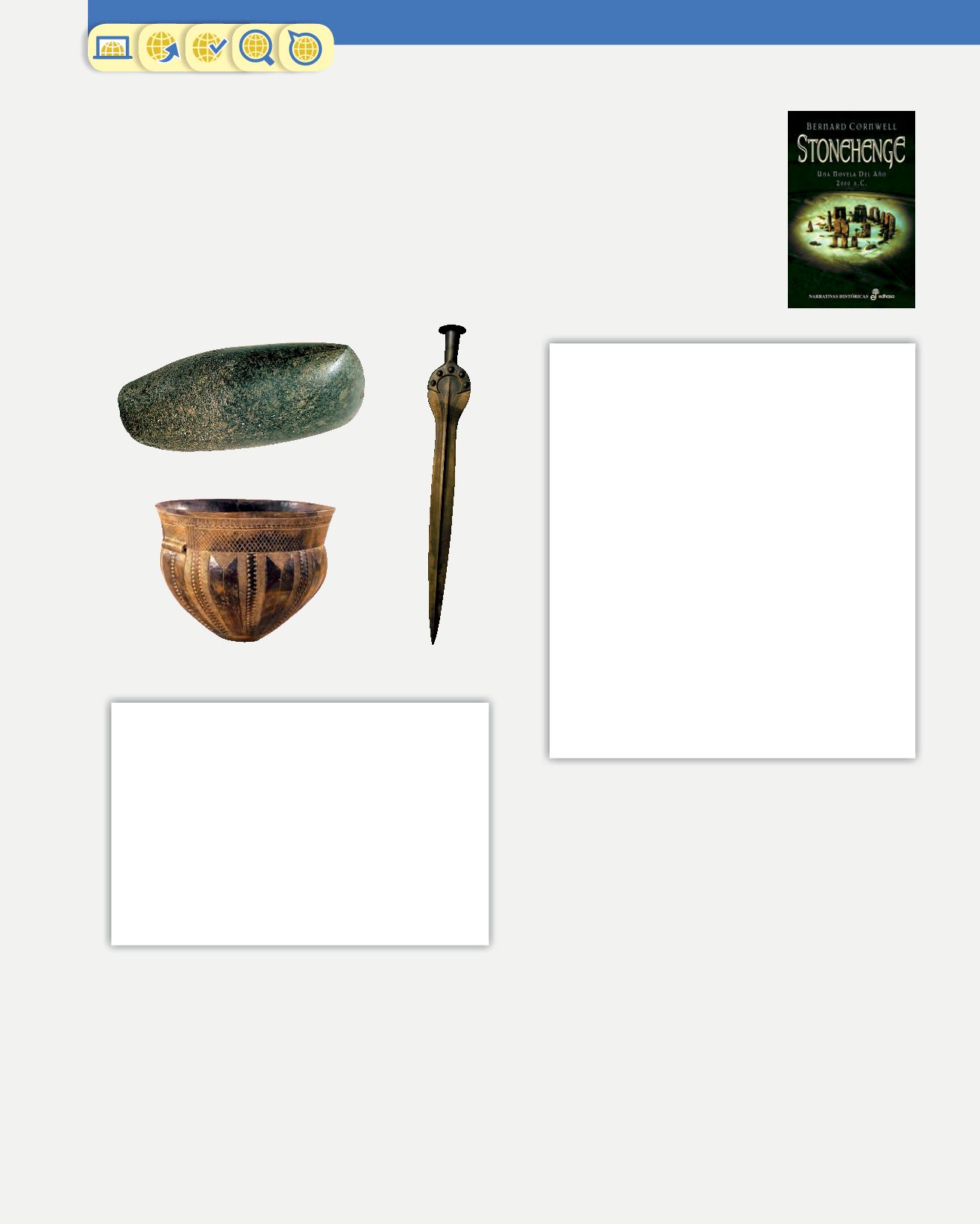
2. The Neolithic period and the Bronze and Iron Ages
41
42.
Stonehenge
isanovel setonthe
island of Great Britain during
the Bronze Age. Through
the lives of its inhabitants,
we learn how and why the
cromlech of Stonehenge was
built. This is one of the most
spectacular and enigmatic
historical novels. Read the
following extract and answer
the questions below.
a) How many people do you think were needed to
complete the task described in the extract?
b) Why does this not seem as amazing to us nowadays,
as it did to the builders then?
c) What beliefs led these people to say that Stonehenge
was the work of a god, when in reality they constructed
it themselves?
43.
Think about the innovations and changes that
occurred during the Neolithic Period, Bronze and
Iron Ages, which you have learned about in this
unit. Do you think they were all good? Write an
essay about your conclusions, stating in which ways
humanity improved and in which ways it worsened.
39.
Look at the objects below. In your notebook, classify
the objects the following way:
❚
The name and description of the object.
❚
The historical period it belongs to.
❚
What it was used for.
❚
The advantages of this object over the tools used
previously.
❚
The type of society it reflects.
40.
Copy and complete the text in your notebook.
41.
Many changes occurred during the Neolithic Period
and the Bronze and Iron Ages.
❚
How many of these changes have been maintained to
the present day?
❚
How have some of them evolved with time?
Write an essay about this, giving specific examples for
each case. Conclude your essay by selecting the change
you consider to be the most important and justify your
answer.
2
During the _________ a settlement developed on the
_________ peninsula called Catalhoyuk.
The inhabitants constructed their houses very close to
each other and there were no streets so they could
defend themselves more easily. They walked along the
rooftops and used doors in the ceiling reached by stairs.
They decorated their houses with female figurines called
_________ and bulls’ heads. The remains that have been
found do not indicate that there were social differences.
This means it was an _________ society.
Catalhoyuk was inhabited for more than two thousand
years, until a fire burnt down its walls, which were made
of _________ .
Hurry up! Hurry up!’, shouted Camaban. They worked
hard, whipping the oxen. The ropes shook and the stone
was raised little by little.
‘Be careful now!’, warned Saban. The block was almost
straight and if the oxen pulled too hard, there was a
danger that they would pull it too far.
‘Once more’, insisted Saban. At that moment, the
monolith moved under its own weight and suddenly
straightened, pushing against the protective stakes
with a loud crash. Saban held his breath. The first and
tallest stone of the temple was in place. The ropes were
removed, the hole was filled and finally, Saban walked
away to admire what he had achieved from a distance.
What he saw was a marvel that would be greater than
any other in his land, something that no one in the world
had ever seen before. He saw a stone standing as tall as
a tree. His heart filled with emotion and his eyes filled
with tears.
‘It is the work of the god Slaol’, he gestured humbly.
Bernard C
ORNWELL
Stonehenge
, Edhasa
(Adapted)


